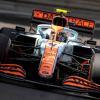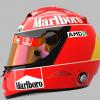Plain text bits from the 2025 Formula One Driving Standards Guidelines that can be seen in that video:
Driving Standards Guidelines
February 20, 2025
V4.1
These are GUIDELINES and NOT REGULATIONS
Many incidents require subjective judgement, and the Stewards are guided by the experience of their Driver Stewards in combination with these guidelines and the FIA Regulations.
If it has been established from points A and B below, that an overtaking driver has priority, it is the responsibility of the defending driver to avoid a collision or forcing off the overtaking driver.
Attention is also drawn to the important note in Point F on page 3, for defending drivers who leave the track whilst defending a position.
A. Overtaking on the INSIDE of a corner:
To be entitled to be given room when overtaking on the INSIDE, the overtaking car must:
i) Have its front axle AT LEAST ALONGSIDE THE MIRROR of the other car PRIOR TO AND AT THE APEX
ii) Be driven in a fully controlled manner particularly from entry to apex, and not have “dived in”.
iii) In the Stewards' estimation, have taken a reasonable racing line and been able to complete the move whilst remaining within track limits.
B. Overtaking on the OUTSIDE of a corner:
Overtaking on the outside will always be viewed as a more difficult manoeuvre to accomplish.
To be entitled to be given room, including at the exit, when overtaking on the OUTSIDE, the overtaking car must:
i) Have its front axle AHEAD OF THE FRONT AXLE of the other car AT THE APEX.
ii) Be driven in a controlled manner from the entry, to apex, and to exit.
iii) Be able to make the corner within track limits.
C. Chicanes and S-Bends:
i) The above guides for INSIDE and OUTSIDE may apply for each element of the combination. Generally, priority will be given to the first corner element.
IMPORTANT NOTES
– – –
v) was there understeer/oversteer/locking?
vi) Did someone position/handle their car in a way that contributed to the incident?
vii) Did the type of corner contribute to the incident? (e.g. camber, kerbs, curve, apexes)
viii) What were the relative tyres/tyre age/grip?
D. Track Limits:
It is considered that respecting track limits is important for both, racing fairness and safety, thus Art. 33.3 of the F1SR will be strictly enforced:
“Drivers must make every reasonable effort to use the track at all times and may not leave the track without a justifiable reason.
Drivers will be judged to have left the track if no part of the car remains in contact with it and, for the avoidance of doubt, the white lines defining the track edges are considered to be part of the track, but kerbs are not...”
Note(s):
In Free Practice, invalid lap times will only be deleted in circumstances where such FP classification may be needed to set the grid.
In the case of an infringement in Sprint Qualifying or Qualifying, the lap time will be deleted, and the time ...
– – –
Not only will Art. 37.5 of the F1SR be enforced but drivers are reminded of Art. 33.4:
“At no time may a car be driven unnecessarily slowly, erratically or in a manner which could be deemed potentially dangerous to other drivers or any other person.”
F. Giving back a lasting advantage:
The Procedure in Art. 33.3 will be strictly applied:
“Should a car leave the track the driver may re-join, however, this may only be done when it is safe to do so and without gaining any lasting advantage. At the absolute discretion of the Race Director a driver may be given the opportunity to give back the whole of any advantage he gained by leaving the track.”
Note(s):
If, while defending a position, a car leaves the track (or cuts a chicane) and re-joins in the same position, it will generally be considered by the stewards as having gained a lasting advantage and therefore, generally, the position should be given back, as prescribed in the rules. It will be the sole discretion of the Stewards to determine if the driver of a car is “defending a position”.
G. Moving on the Straight:
Appendix L, Chapter IV, Article 2 states:
– – –
Edited by ANF, Today, 12:27.

































